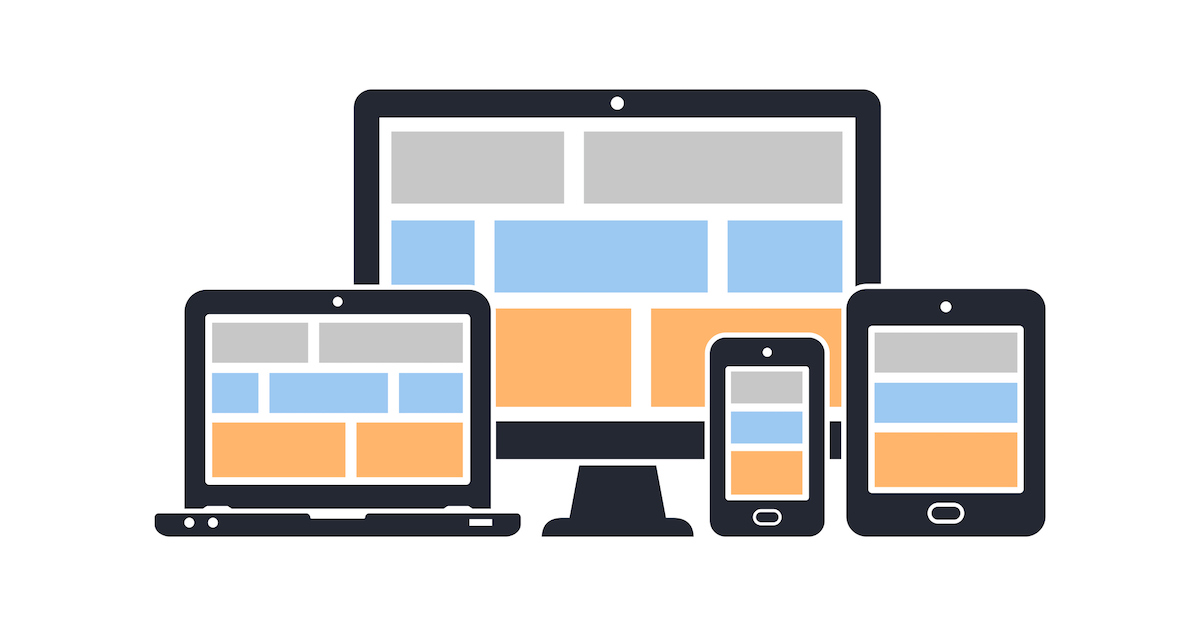Table Of Content

Sure, certain widths or breakpoints are more important than others, but every different width generates a slightly different layout. Time is also a concern — companies must have the available staff resources, or be willing to spend on outside help, to identify key GUI elements, design multiple instances, and deploy them at scale. CareerFoundry is an online school for people looking to switch to a rewarding career in tech.
Adaptive Design License info

Over the last two decades, we have seen and been involved with dozens of trials where ADs have sped up, shortened or otherwise improved trials. Thus, our key message is that ADs should no longer be ‘a dream for statisticians only’ [23] but rather a part of every clinical investigator’s methodological tool belt. Under some circumstances, an AD would be nonsensical, e.g. if the outcome measure of interest takes so long to record that there is basically no time for the adaptive changes to come into effect before the trial ends. Moreover, it is important to realise that pre-planned adaptations are a safeguard against shaky assumptions at the planning stage, not a means to rescue an otherwise poorly designed trial. The defining characteristic of all ADs is that results from interim data analyses are used to modify the ongoing trial, without undermining its integrity or validity [12]. Thus, we need to make sure they are collected, analysed and stored correctly and in accordance with good clinical practice at every stage.
Popular Features
Interior Design Awarded $85000 for Sustainable Adaptive Material Practicum Lab - UF College of Design, Construction and Planning
Interior Design Awarded $85000 for Sustainable Adaptive Material Practicum Lab.
Posted: Mon, 28 Aug 2023 07:00:00 GMT [source]
Mindful of the statistical and operational pitfalls discussed in the previous section, we have compiled a list of 11 reporting items that we consider essential for AD trials, along with some explanations and examples. Given the limited word counts of most medical journals, we acknowledge that a full description of all these items may need to be included as supplementary material. However, sufficient information must be provided in the main body, with references to additional material.
What Are the Key Elements of Responsive Web Design?
Just a few years ago, designers could create a single rigid website version and call it a day. Now, they need to take into account innumerable smartphones, wearables, tablets, and other smart devices — and so do you. Responsive Design lets designers show content based on the browser space available.
When stopping recruitment to one or more treatment arms, it is necessary to reveal that they have been discontinued and consequently hard to conceal the identity of the discontinued arm(s), as e.g. patient information sheets have to be updated. This practice is straightforward, but clearly inflexible as it does not include options for changes that may become desirable or necessary during the course of the trial. They have been described as ‘planning to be flexible’ [2], ‘driving with one’s eyes open’ [3] or ‘taking out insurance’ against assumptions [4].
In some cases though, adaptation rules may be specified as non-binding (e.g. futility stopping criteria in group-sequential trials) and therefore, inevitably require the TSC to make a decision on how to proceed. The first step is to convince the decision-making body that the design is appropriate (in addition to showing scientific merits and potential, as with any other study). This is sometimes more difficult with ADs than for traditional trial designs, as the decision makers might not be as familiar with the methods proposed, and committees can tend towards conservative decisions.
Difficulties faced in interpreting research findings with heterogeneity across interim stages have been discussed in detail [119–123]. Although Bayesian statistics is by nature not concerned with type I error rate control or p values, it is common to evaluate and report the frequentist operating characteristics of Bayesian designs, such as power and type I error rate [107–109]. Consider e.g. the frequentist and Bayesian interpretations of group-sequential designs [110–112]. Moreover, there are some hybrid AD methods that blend frequentist and Bayesian aspects [113–115]. In this section, we have highlighted some of the considerations necessary when embarking on an AD. They are, of course, far from comprehensive and will depend on the type of adaptation(s) implemented.
We encourage the discussion of all positive, negative and perhaps surprising lessons learned over the course of an AD trial. Sharing practical experiences with AD methods will help inform the design, planning and conduct of future trials and is, thus, a key element in ensuring researchers are competent and confident enough to apply ADs in their own trials [27]. For novel cutting-edge designs especially, we recommend writing up and publishing these experiences as a statistician-led stand-alone paper.
Adaptive sites are easier for developers to implement, and because they only deliver the code necessary for the given screen size, they tend to load much faster than responsive sites. Developers use CSS to ensure each page of the site can reformat based on the size of the user’s viewport and only need to create one codebase for the site. They use something called breakpoints to tell the site when to adjust to accommodate different screen sizes.
This principle can be applied in product management, emphasizing the importance of creating genuine value for customers. "The Adaptive Reuse Ordinance was one of the most critical components of the revitalization of DTLA," said Karin Liljegren, Principal & Founder of Omgivning. "If updated and expanded throughout the city it could be an important component for creating housing, maintaining our neighborhoods' culture and doing it all in the most sustainable form possible. Users appreciate sites that adapt to their needs, so companies can not only access a wider audience but an audience more likely to return. Users can then switch from one device to another with the expectation that the presentation and quality of a website will remain consistent across devices.
One high-impact initiative is the CONSORT (Consolidated Standards of Reporting Trials) statement [125], which itemises a minimum set of information that should be included in reports of RCTs. The total probability of rejecting the null hypothesis (type I error rate) is an important quantity in clinical trials, especially for phase III trials where a type I error may mean an ineffective or harmful treatment will be used in practice. In some ADs, a single null hypothesis is tested but the actual type I error rate is different from the planned level specified before the trial, unless a correction is performed. The TSC, whose main role is to oversee the trial [52–54], must approve any ad hoc modifications (which may include the non-implementation of planned adaptations) suggested by the IDMC. However, their permission is not required for the implementation of any planned adaptations that are triggered by observed interim data, as these adaptations are part of the initial trial design that was agreed upon.
Therefore, it’s important to offer a link to let the user toggle between versions. Adaptive designs are a range of pre-made layouts that fit different screen sizes. The device's browser selects the best-fitting design from those options. An adaptive design should cater to the different devices' capabilities and limitations. For example, layovers and dropdowns (or other instances when your design shows multiple panels or screens at once) don’t translate well to smaller viewports. The design should optimize down to the user experience for that device.
We like to feel that our devices are aware of what we’re going through. Let’s take a literal example; if you were driving through a long tunnel, wouldn’t you rather have a GPS screen that adapts to the environment and adjusts its brightness? That context-based performance and usability is reassuring, at the same time confirming that your smart device is smart enough to adapt and be extra useful. Since screen sizes are generally used in their default state (in the sense that you can’t or wouldn’t need to resize it), the term “adaptive design” might fit the bill more accurately. Websites (well-designed ones at least) will modify their layout to fit the device of the user; it’s an involuntarily action, meaning the user doesn’t have to interact with the website to make it adapt. Adaptive design could also describe how we optimize loading times and perceived performance for smaller, handheld devices.
These details simplify the setup and help customers navigate pages efficiently. Instilling this thoughtfulness into the responsive site creation process allows designers to anticipate user needs and fashion more accessible websites. A responsive web design is all about meeting and then surpassing the expectations of potential customers.
BuildZoom is a database of every licensed contractor in the United States.We work hard to figure out who the great contractors are, and who the badcontractors are. All licensed contractors in California are required to maintain a bond, which provides you with financial recourse in case they perform defective work or violate license regulations. If you feel as though you have been taken advantage of, you should leave feedback on the contractor's BuildZoom profile and file a complaint with the CSLB. In California, any remodeling or construction project that exceeds $500 (labor and materials), requires a contractor to have an active license with the California Contractor State License Board (CSLB).
As a result, there may be certain devices on which a webpage isn’t arranged to create the best user experience. Furthermore, because the code for the entire website is delivered no matter what device the site is accessed on, a responsive site can be slower to load. Designing websites for multiple devices is more than just resizing the layout on different screens. Designers must determine how the content will change on the screen and which elements get resized or reoriented. To achieve this, designers must follow an effective strategy to improve user experience on these devices.

No comments:
Post a Comment